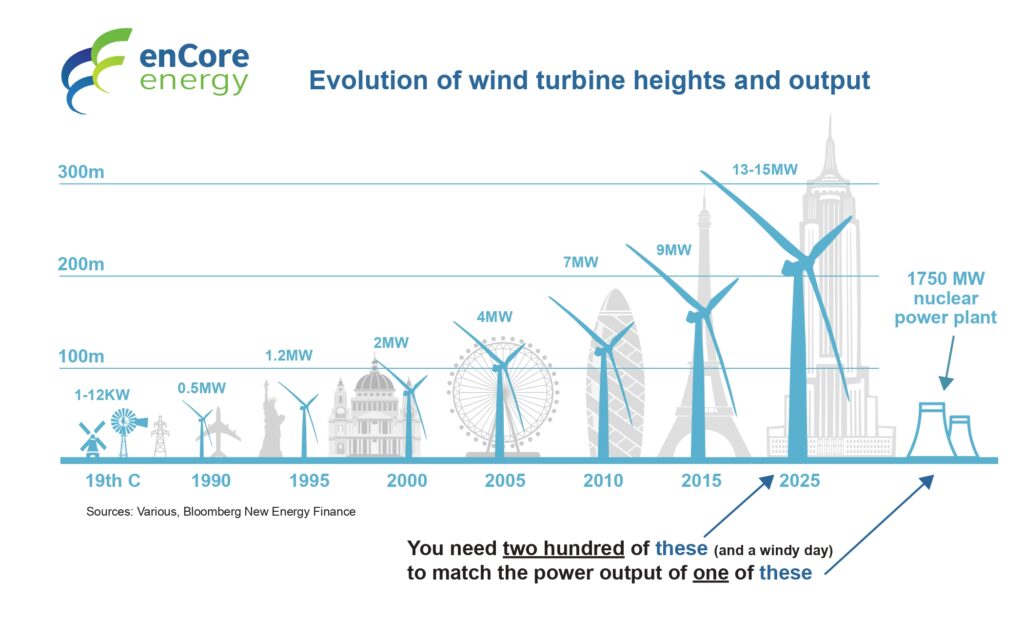Nuclear Energy: The Future
Clean Air Energy – The Benefits of Nuclear Energy
Why Nuclear Energy?
- The only affordable and efficient energy source which is available 24/7
- It is the largest source of carbon-free electricity in the United States and protects our air quality by generating electricity without other harmful pollutants (NEI)
- Bi-Partisan Support for Nuclear Energy in the US – for the first time in 48 years the Democrat platform supports nuclear: “We are not going to be able to achieve our climate goals if nuclear plants shut down. We have to find ways to keep them operating” – Energy Secretary Granholm
- Despite common misconceptions, nuclear energy is one of the safest sources and has seen dramatic changes over the last 50 years to make the technology even safer and more efficient
- “Uranium is being advanced as a “critical material” that is vital to America’s economic and national security.” – U.S. Department of Energy
Most people immediately think of solar panels or wind turbines, nuclear is often left out of the “clean energy” conversation despite it being the second largest source of low-carbon electricity in the world behind hydropower.
So, just how clean and sustainable is nuclear?
Nuclear is carbon-free.
It is the largest source of carbon-free electricity in the United States and protects our air quality by generating electricity without other harmful pollutants like nitrogen oxide, sulfur dioxide, particulate matter or mercury.
Nuclear energy protects air quality.
Nuclear is a zero-emission clean energy source. It generates power through fission, the heat released by fission is used to create steam that spins a turbine to generate electricity without the harmful byproducts emitted by fossil fuels. According to the Nuclear Energy Institute (NEI), the United States avoided more than 476 million metric tons of carbon dioxide emissions in 2019. That’s the equivalent of removing 100 million cars from the road and more than all other clean energy sources combined. It also keeps the air clean by removing thousands of tons of harmful air pollutants each year that contribute to acid rain, smog, lung cancer and cardiovascular disease.
Nuclear energy’s land footprint is small.
Despite producing massive amounts of carbon-free power, nuclear energy produces more electricity on less land than any other clean-air source. A typical 1,000-megawatt nuclear facility in the United States needs a little more than 1 square mile to operate. NEI says wind farms require 360 times more land area to produce the same amount of electricity and solar photovoltaic plants require 75 times more space. To put that in perspective, you would need more than 3 million solar panels to produce the same amount of power as a typical commercial reactor or more than 430 wind turbines (capacity factor not included).
Nuclear energy produces minimal waste.
Nuclear fuel is extremely dense. It’s about 1 million times greater than that of other traditional energy sources and because of this, all of the used nuclear fuel produced by the U.S. nuclear energy industry over the last 60 years could fit on a football field at a depth of less than 10 yards.
Nuclear is reliable.
Nuclear plants are the most efficient source of electricity, operating 24/7 at a more than 93 percent average capacity factor. That’s more than two times the capacity factor of any other carbon-free source. During the 2019 polar vortex, U.S. plants operated at more than 98 percent capacity. Nuclear plants can achieve these numbers because of world-class operations and because a plant only refuels once every 18-24 months.
Nuclear is powerful.
One uranium fuel pellet—about the size of a gummy bear—creates as much energy as one ton of coal, 149 gallons of oil or 17,000 cubic feet of natural gas. A single nuclear power reactor generates enough electricity on average to power over 700,000 homes without emitting any greenhouse gases—that’s more than enough to power a city the size of Philadelphia. In fact, America’s 94 nuclear plants produce enough electricity to power 75 million homes.

